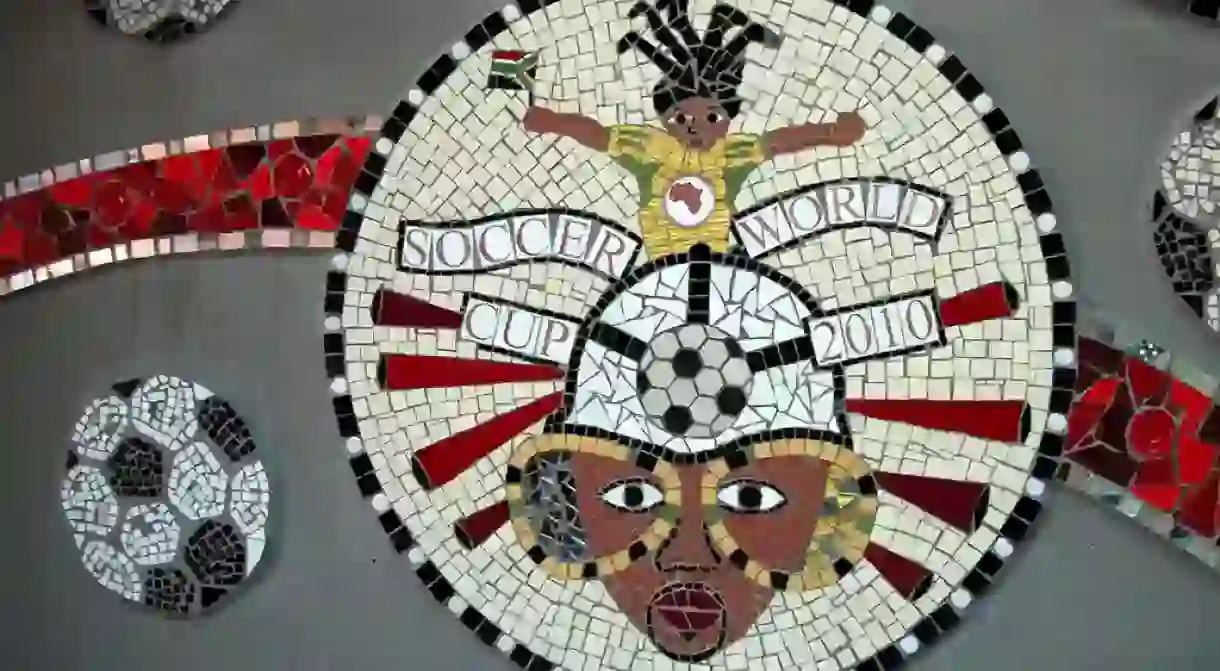The Best Public Art in Cape Town

Public art in Cape Town has been a fairly contentious issue for some time. Though some installations have been ill-considered, insensitive and problematic, others serve a greater purpose of provoking thought and lighting up public spaces.
‘Arch for Arch’ celebrates the work of a local hero
Art Gallery, Historical Landmark

The name Arch for Arch is a clever pun – the wooden structure, which was designed by Norwegian architects Snøhetta, commemorates the life and work of Archbishop Desmond Tutu, whose nickname is ‘The Arch’. Tutu, who won the Nobel Peace Prize in 1984, is one of the most celebrated South Africans of all time and has a personal connection to Cape Town, as he was the city’s first black archbishop. The beautiful, light structure carrying his name was unveiled in 2017 and is located next to St George’s Cathedral. Its design welcomes interaction and is open to everyone, a fitting tribute to a champion of human rights and a key figure in the fight against apartheid.
Journey through the city at Es Devlin’s ‘Zoetrope’
Art Gallery

A visit to Cape Town’s vibrant V&A Waterfront area would not be not complete without checking out Es Devlin’s interactive installation Zoetrope (2018). The solar-powered pavilion houses a theatre that screens 12 one-minute films, which were made by Devlin in collaboration with South African filmmakers. The films depict locations close to the site and showcase everything from a football match on a rooftop to an underwater kelp forest, while the pavilion itself was constructed from concrete made using sand sourced from the featured locations. Devlin’s creation was commissioned by Mercedes-Benz South Africa and aims to take visitors on a journey through the films. It envisions a future where solar-powered, site-specific installations function as a “charging station for the mind of the driver”, and is open, free of charge, until 1 November 2019.
’Ralph Borland’s ‘Ghost Sharks’ float above Cape Town’s Foreshore
Art Gallery

Host a debate on Rosenclaire’s ‘Soap Boxes’
Art Gallery

Look out for ‘Human Sculptures’ among the crowds
Art Gallery

André Carl van der Merwe’s ‘Rhinosaur’ sheds lights on the country’s poaching crisis
Art Gallery
Get close to a slab of the Berlin Wall, a genuine piece of world history
Art Gallery

Roderick Sauls’s ‘Apartheid Race Benches’ serve as a reminder of the country’s political past
Art Gallery

Take a break on a bench installed and decorated by Rock Girl, a group working hard to protect women from abuse
Rock Girl is an impressive organisation that creates both symbolic and real safe spaces across South Africa. They partner with artists, who create striking benches in symbolic locations and pair these with physical safe spaces for vulnerable girls and women. You’ll find the benches dotted throughout Cape Town, including Signal Hill, The Company’s Garden, St George’s Mall and the Cape Town International Convention Centre. Each bench is worth engaging with for its artistic beauty, as well as its greater role in a city where violence against women and girls is all too prevalent.
Liven up your commute by checking out local art at the city’s MyCiTi bus stations

Cape Town’s mass bus-based public transport system, MyCiTi, is a triumph for public art in the city. Local artists have transformed most of the city’s major stations into vibrant works of art. Though easy to miss if you’re commuting to and from work, as a visitor it pays to slow your day down and take in the beauty at most fixed bus stations in and around the city.













